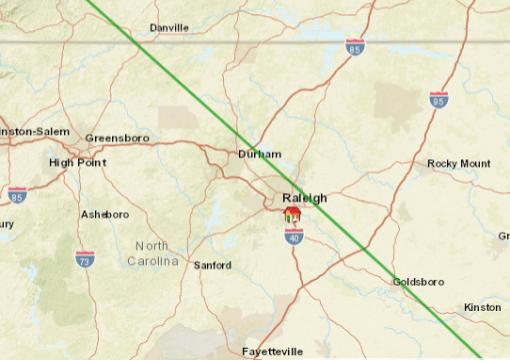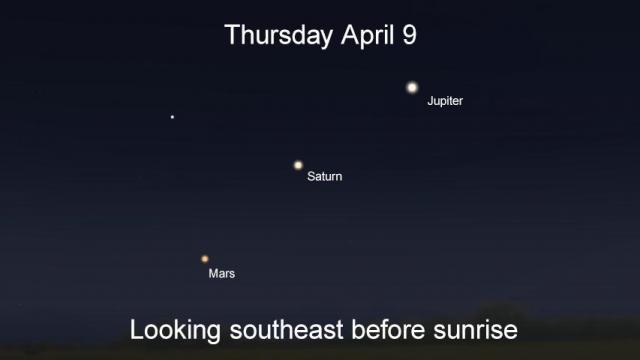What to look for in the sky this week: April 5-12 – WRAL.com
Sunday, April 5
Look to the northwest at 9:19 pm for a very bright pass of the International Space Station. It will disappear in the south-southwest 2 minutes later as it passes into the Earth’s shadow.
Monday, Apr 6
Look to the northwest at 8:31 pm for the International Space Station. This will be one of the brightest passes of the year. The closer the station is, the brighter it appears, and it is at its closest on this pass with the ground track passing right over Durham and Raleigh.
The station will appear to be directly overhead as it disappears into the Earth’s shadow.
Tuesday April 7
Look up for the super pink Moon tonight, the closest, therefore brightest full moon of 2020. The turns full at 9:35 pm less than 8 hours after perigee, the closest point in its orbit to the Earth. The best time to look is shortly after sunset as it rises on the eastern horizon, when it looks its biggest.
The Moon won’t appear pink though. The pink name comes from the pink phlox flowers that tend to bloom around this time of year.
The Moon will still be its normally almost pure white color when overhead and more yellowish when near the horizon. This color comes from the atmosphere’s tendency to scatter light in the blue part of the spectrum while allowing through red and green.
Wednesday April 8
The Moon will still appear nearly full for a few nights. This is the time many astronomers mark on their calendar for anything but sky gazing. The Moon is just too bright.
Thursday April 9
Mars, Saturn and Jupiter line up in the predawn sky. The best time to look is about an hour before sunrise in the southeast.
Friday April 10
A pair of binoculars and a steady hand is all you need to catch a glimpse of Saturn’s brightest moon Titan. Our Moon, now waning, is far enough away to be less of a problem. Look for Titan before dawn up and to the right of Saturn. Sky and Telescope magazine offers a tool that identifies Saturn’s moons.. The @SaturnMoonPos Twitter account, labels each moon (Titan, Rhea, Dione, Tethys, Enceladus and Mimas). You’ll likely only see Titan with binoculars.
Also look for a line of satellites moving the northwest to the east between 6:10 and 6:22 am. These are part of the Starlink constellation of satellites launched by SpaceX to provide internet connections across the globe.
Saturday April 11
Normally celebrated each April 12, the anniversary of the first human spaceflight, Yuri’s night is moving online for 2020. The global livestream begins at 7 pm EDT with special guests and a “message of unity and hope” according to organizers.
Guests include Canadian Astronaut Chris Hadfield, NASA astronauts Story Musgrave, Nicole Stott, Scott Kelly and live from the ISS Jessica Meir.Sun
Sunday April 12
Not only did Soviet cosmonaut Yuri Gagarin become the first human to orbit the Earth on this day in 1961, the first space shuttle mission, STS-1, launched on this day 20 years later. A software issue caused timing problems in one of Columbia’s four main computers caused a launch two days earlier to be scrubbed until a software patch could correct the problem.








